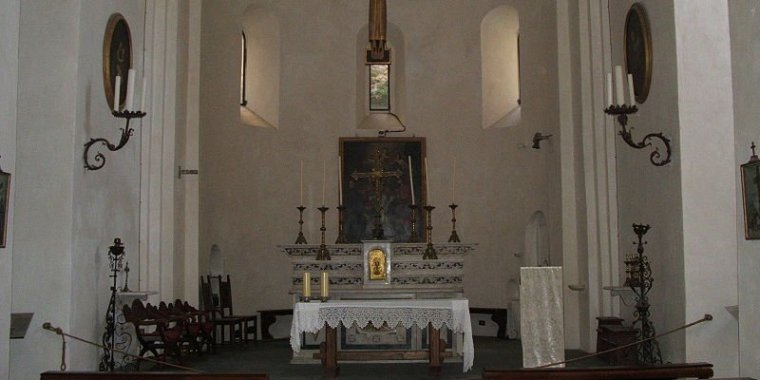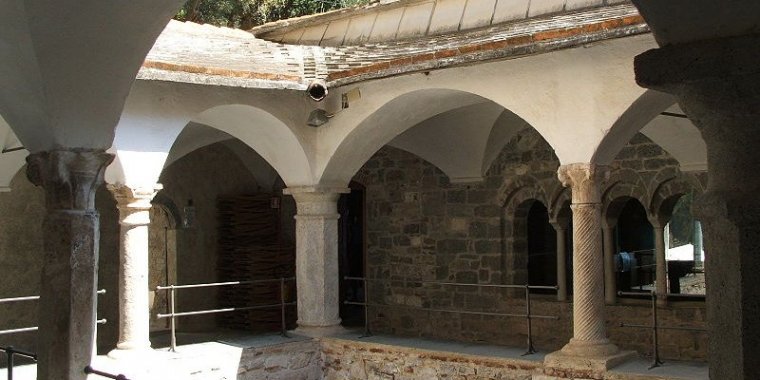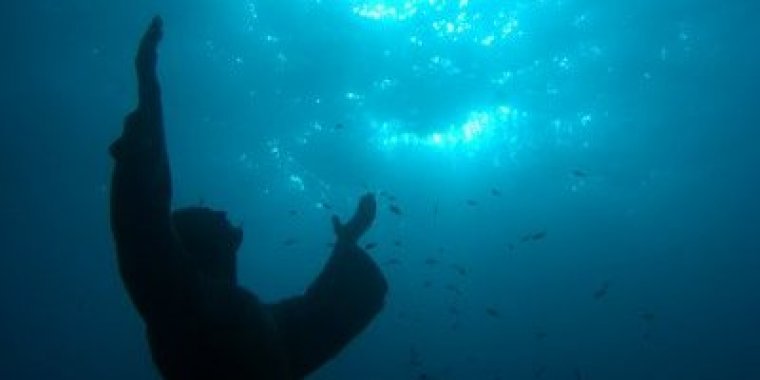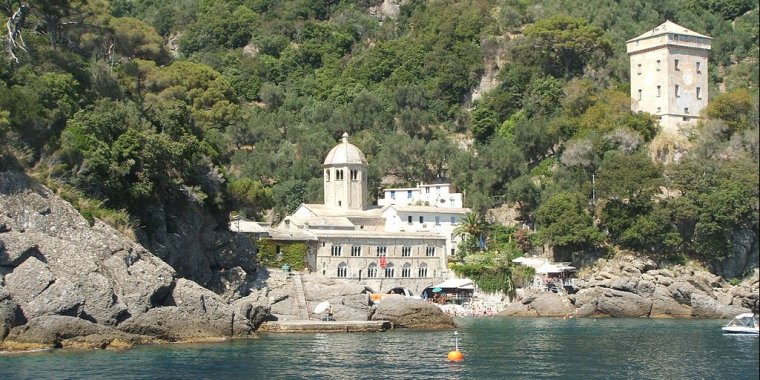| Published in Attractions / Places of Interest |
San Fruttuoso Abbey (Abbazia di San Fruttuoso), Italy
The Abbey of San Fruttuoso (Abbazia di San Fruttuoso) is on the Italian Riviera between Camogli and Portofino. It is the seat of the Catholic parish of the same name of the Vicariate of Recco-Uscio-Camogli, Archdiocese of Genoa.
The abbey is located in a small bay beneath a steep wooded hill. It can only be reached by sea or by hiking trails, there is no road access.
The abbey is dedicated to Saint Fructuosus, a third-century bishop of Tarraco (now Tarragona in north-east Spain) who was martyred under the persecutions of the Roman Emperor Valerian. In the eighth century the relics of Fructuosus were moved here by Greek monks. St Fructuosus's ashes are still kept at the abbey.

San Fruttuoso abbey - interior. ![]()
The abbey was founded by the Order of Saint Benedict and most of its buildings date to the tenth and eleventh centuries. The original tenth-century church tower had a Byzantine-style spherical top; this was later replaced by the present octagonal tower. The cloisters are twelfth century and were modified in the sixteenth century by Andrea Doria. The building facing the sea was built in the thirteenth century to a similar design to the noble palaces of Genoa.
The abbey contains tombs of members of the noble Genoan Doria family dating from 1275 to 1305, along with other tombs and an ancient Roman sarcophagus. The Doria tombs have black and white stripes, typical of Ligurian architecture of the period.
Above the abbey stands Torre Doria, a watchtower erected in 1562 by the family of Admiral Andrea Doria (1466–1560), who defended the abbey and its supply of fresh water from Barbary pirates.

San Fruttuoso abbey - cloister. ![]()
In the 17th century the abbey went into decline, and parts of it were used for keeping sheep. In 1730 Camillo Doria restored the abbey, and returned the church to liturgical use. Some of the buildings were damaged by flooding in 1915, these were restored by the Italian state in 1933.
In 1983 the Doria Pamphili family donated the San Fruttuoso complex to the heritage organisation Fondo Ambiente Italiano. Restoration of the buildings started in 1985 and was completed in 2017.
The underwater statue Christ of the Abyss (Il Cristo degli Abissi) was installed in the sea off San Fruttuoso in 1954, at a depth of 17 metres (56 ft). It is a submerged bronze statue of Jesus Christ and stands 2.5 metres (8 ft) tall. It was sculpted by Guido Galletti, based on an idea of Italian diving instructor Duilio Marcante.
The statue was placed near the spot where Dario Gonzatti, the first Italian to use SCUBA gear, died in 1947. It depicts Christ offering a benediction of peace, with his head and hands raised skyward. The statue was subsequently dedicated to the memory of Marcante.

Christ of the Abyss at San Fruttuoso. ![]()
Due to increasing amounts of corrosion and the growth of crustaceans, the statue was removed from the water and restored in 2003. A hand that had been detached, presumably by an anchor, was also replaced. The statue was returned to the water with a new base on 17 July 2004. The statue was cleaned in 2018.
Source
• www.wikipedia.org
YOU MAY ALSO LIKE






 If you own or manage a travel-related business such as a hotel, a bed-and-breakfast, a restaurant, a pub or a cafeteria, you can create a web page for your business for free on Titi Tudorancea Travel Info. » |
